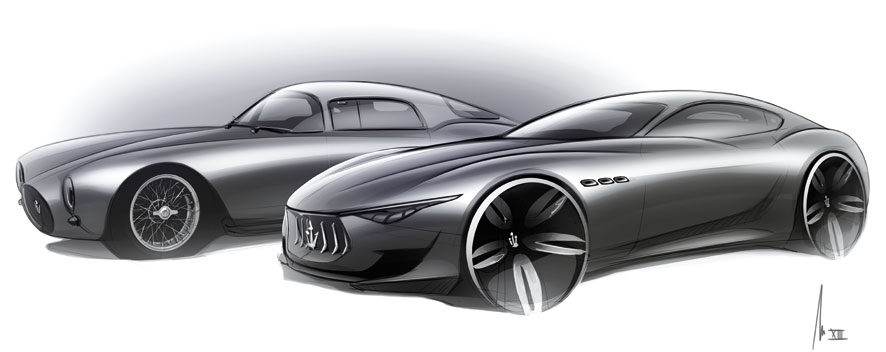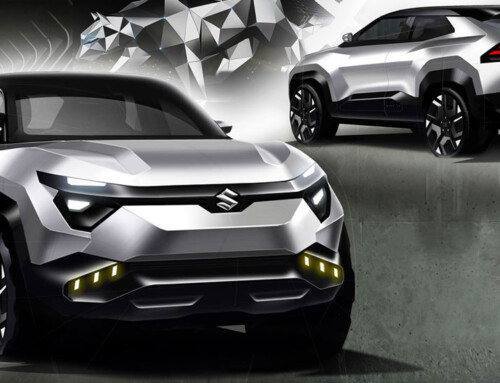From a blank sheet of paper to production certainty in less than a year, the Alfieri – named in homage to one of Maserati’s two founding brothers – was created in an unprecedentedly short space of time.
The manifesto of the new face of Maserati, the car is the next step in the evolution of the DNA at the heart of the iconic Trident marque. After its clamorous reception at the Geneva Motor Show, where it met with universal acclaim, the production car will probably reach showrooms before the end of 2016.

“We wanted to mark the brand’s centennial with a concept with powerful visual impact – explains Fiat Chrysler Global Design director Lorenzo Ramaciotti – and we initially considered ideas for futuristic, pure dream cars. But Marchionne asked us to change direction, and to focus instead on something that truly portrayed the future of the brand. So we opted for a more conventional configuration for Maserati – the 2+2 compact sports coupé. The result was such a hit that it will become reality – an object that our customers will actually be able to buy.” This is not the first time that a “one-off” created by the Turin-based Centro Stile has spawned a production model: other cases were the Trepiùno, which led to the 500, and the Alfa Romeo 8C and 4C. This magnificent sports car, however, was turned into reality in an even shorter period of time. On 23 October 2013, Ramaciotti presented drawings of the Maserati to celebrate the brand’s centennial to the Group Executive Council – the decision-making board of FCA – in Brazil, and met with unanimous approval. Four months later, the prototype – built on a shortened version of the GranTurismo platform and measuring 4.6 metres in length and 1.3 in height with a generous 2.67 metre wheelbase – was ready for its debut at Geneva. The next challenge is to put the car on the road with as few modifications as possible relative to the concept: with very few changes to the exterior, and minor changes to just a few functional elements in the interior.
While brimming with cues citing the brand’s history, the Alfieri is anything but retro. The car is mainly inspired by the A6GCS of 1954 that eventually earned praise for its sheer beauty – for its perfect proportions with a very long bonnet, a cab pushed far back towards the tail and perched on a central body flanked by sweeping fenders, and a low-set grille framed between the front fenders. Some of these elements – albeit in a contemporary key – have been applied to the Alfieri.
Maserati Design Director Marco Tencone oversaw every stage in the styling process together with his second in command Alberto Dilillo. “Our goal – he says – was to implement modern concepts but without being influenced by fashion and popularistic trends. We wanted to accentuate the ‘italianness’ of the car, with its soft lines and decisive but pure graphics.” The classic DNA of Maserati is apparent in every element, including the three lateral air vents, but in a futuristic perspective. The original personality expressed by the tail view is, however, the most surprising aspect of the car.
Unlike the Alfa Romeo 4C, which is a more extreme car focused single-mindedly on lightness, the Alfieri has no need for ultra-technological structural solutions, although carbon has been used for certain details.

The secret of the car’s character lies in sophisticated combinations of cleverly matched materials, forms and colours. The cabin is an exercise in obsessive attention to detail, with two rear seats which, when tipped forward, increase the size of the luggage compartment while protecting the occupants of the front seats, or, when upright, continue towards the rear window to replace the parcel shelf and create a single volume shooting-brake effect, as in a 1950s coupé.
Other bold cues clearly citing the past but interpreted in a modern key appear in the steering wheel, with a dished shape evocative of classic steering wheels in bakelite, in the gear shift lever – a truncated cone as in historic race Maseratis – and even in the clock situated low down on the centre tunnel console, as seen in the 150 GT.
Traditional Maserati blue has been used subtly to accentuate certain specific elements, such as the wheel spokes, the flank vents, the Alfieri logo and the tailpipes. Inside the cabin, Luna white and blue are juxtaposed in the exclusive leather trim to highlight the sense of craftsmanship. Anodised copper emphasis the instruments and steering wheel and carbon is used as a material expressing contemporary high performance.
The article continues in Auto & Design no. 208












